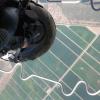Scary moment today
-
Members Online
- Rich
- toto
- MB65E
- eman1200
- bixmooney
- Alan Fox
- varlajo
- 47U
- takair
- ohdub
- Kelpro999
- Guilly
- EKoS
- 1967 427
- PeytonM
- CCAS
- shawnd
- neilpilot
- 303mooney
- ta2too
- jeremyc209
- spaceman39a
- 1980Mooney
- mooneyfun
- Marc_B
- OSUAV8TER
- Ibra
- 7.Mooney.Driver.0
- DCarlton
- good2eat
- Danb
- Obsession2
- georgewdean1020
- Airways
- donkaye
- atpdave
- EricJ
- NickG
- FlyingDude
- MatthiasArnold
- Dustoff49
- jetdriven
- corn_flake
- sc9roy


Recommended Posts
Join the conversation
You can post now and register later. If you have an account, sign in now to post with your account.